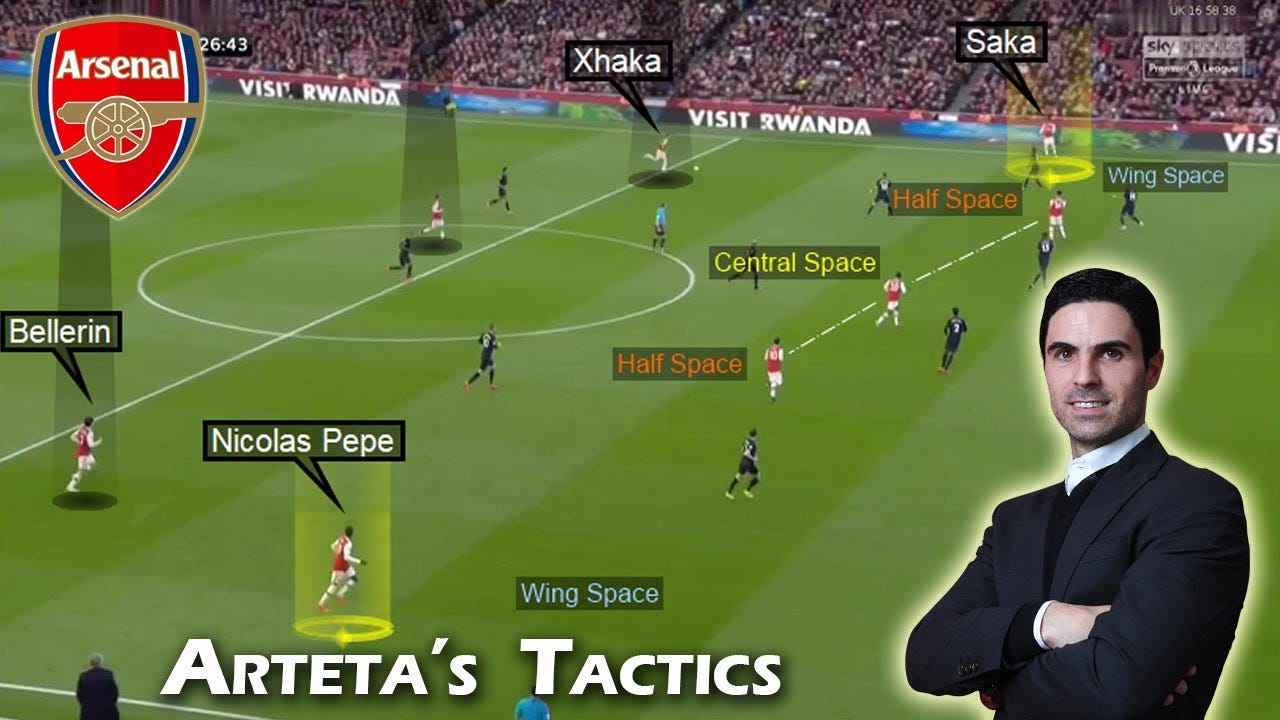
What is VAR?
Video assistant referee (VAR) was introduced to world football in 2018 as a means to minimise “clear and obvious” errors made by referees during football matches. Although VAR was only recently introduced in football, the concept of technology being used to ensure accuracy in decision-making is nothing new in sports. Sports like rugby, cricket and tennis have been using video assistant referees for years.
Throughout history, football like any other sport has always been fuelled by competition, passion, recognition and triumph. While these factors contribute towards an exciting viewing, this also breeds unlawful methods of winning. In other words, players often approach football matches with the belief of the end justifies the means.
This includes attempts to con referees into making decisions that favour certain players or individuals which as you can imagine, usually results in detrimental outcomes for the opposing team. Pre-VAR, there are notable examples of seemingly obvious errors made by referees. If you have ever heard the term “Maradona’s hand of God”, you know exactly what I’m talking about. In the 1986 World Cup, the late Diego Maradona scored a goal with his hand in a match between England and Argentina and despite his attempt to conceal the touch of his hand by motioning that he used his head to guide the ball into the net.
it was fairly obvious to everyone watching that he did indeed use his hand, however the referee allowed the goal to stand. Similarly, in recent times there have been numerous errors made by referees across global football tournaments and events including the UEFA Euro, Champions League and FIFA World Cup.
A notable controversial fixture occurred in the quarter final of the 2017 Champions league between Bayern Munich and Real Madrid. Real Madrid defeated the German giants in the first-leg with a 2–1 scoreline with Cristiano Ronaldo netting a brace.
However, both goals seemed blatantly offside but to the dismay of the Bayern players, the linesman never raised his flag. On further replays, it was obvious that there was a clear offside in probably both the goals, however because VAR had not been introduced at this time, the goals were allowed to stand which acted as a stepping stone for Madrid, who would go on to lift the Champions League trophy that year.
VAR was introduced with the aim of eradicating these mistakes and facilitating unbiased football matches. The implementation of VAR into the modern game has resulted in significant changes to procedures, interpretation of traditional rules and overall decision-making of referees.
Procedure
According to the new rules, VAR has authority over four key decisions:
1. Awarding or disallowing a goal
2. Awarding or disallowing a penalty
3. Awarding a red card for an offence committed
4. Correcting a mistaken identity if a player has been wrongly awarded a yellow or red card because they were mistaken by the referee for the true perpetrator who committed the offence
Although the VAR team are responsible for these four areas, the responsibility does not solely rest on their screens as they have to consult the on-field referee before any verdict can be finalised. During football matches, the VAR team automatically checks every on-field decision the referee makes within the realm of these four areas and if they are happy with the decision they will communicate this to the referee without stopping the flow of the game. Fittingly, these are known as “silent checks”.
However, it can get a little noisy inside the VAR room if they do find a clear and obvious mistake while conducting these checks. For matters that are factual such as wether a player is offside or if the ball has crossed the goal line, the VAR will automatically overturn the referee’s decision as these are determined using sophisticated technology which are often replayed and displayed on the big screens inside stadiums and on TV’s for the benefit of the fans as much as the referees and players.
Secondly, if VAR deems the referee made a wrong decision on a subjective matter such as awarding a red card for an offence committed or missing an infringement in the buildup which led to a goal being awarded, VAR may advice the referee to take a second look at the incident through an “on-field review” (OFR). Sounds familiar? the term might not but if you have watched football recently, you have most likely seen this happen numerous times.
This is when the referee stops play and gestures a rectangle shape using his hands before jogging over to the monitor placed adjacent to the field of play to replay the incident in slow motion multiple times while communicating with VAR. Despite the recommendations provided by the VAR, the final decision remains in the referees hands and they may either concur with VAR or they may choose to ignore the recommendations provided and affirm their original decision.

Has VAR improved decision-making?
Now that we have established what VAR is, how it works and why it was implemented in the first place, we need to address how effective it has been and is it really the proclaimed solution for human errors in football?.
VAR uses advanced technology and they automatically check every on-field decision made and when an OFR occurs, the referee performs it in public view so the fans can see exactly what he/she sees on the monitor. What could go wrong? a lot.
Change in Football Rules
In football, rules and its interpretations are constantly evolving, for better or worse. When the new season begins, it seems that last’s year rules don’t apply anymore. For example, in previous years if the defending team’s player unintentionally handles the ball inside their own penalty box using their arm and if their arm was in a position close to their body it would not be viewed as a foul.
Contrastingly, penalties are currently being given against defenders for handball even when they are sliding along the turf to prevent a goal and are unable to control the positioning of their arms. The sport involves twenty-two players kicking a ball around in a confined setting so it is only natural that the ball can sometimes ricochet off an arm, a shoulder or any other part of the body for that matter.
However, when this does happen, especially inside the penalty box, VAR and referees automatically consider it a possible offence and there’s a 50% chance that it might be given against the defender even if it was completely unintentional and there was absolutely no chance for the player to react quick enough.

Over-Reliance
Since the introduction of VAR, linesmen seem to rely heavily on the technology rather than their own judgement which may not always result in fair outcomes. When there is an obvious offside, linesmen are now being told not to raise the flag for offside until the passage of play ends, after which the VAR will use the technology to draw the offside line and declare a verdict on wether the goal should be allowed to stand.
There seems to be confusion between referees in this area because at times the linesman raises his flag early for offside and the passage of play comes to a halt without a decisive conclusion, however when the replay is being viewed, the attacker may in fact be onside which means the linesman has made an error and the attacking team missed a potential goal scoring opportunity.
Because the passage of play has concluded, VAR is deemed powerless in this case. At the same time, at first glance the attacker may look blatantly offside hence the defending team mentally switches off and stops playing waiting for the linesman to raise his flag but if the linesman decides to rely on VAR, the flag will not be raised. If the passage of play successfully foregoes the VAR checks then the goal will stand even though it could have been avoided had the defending team continued playing instead of waiting for the linesman to raise his flag.
Human error
VAR may have been implemented with the right intention but after all is said and done, the technology is still utilised by humans so there remains a degree of human error involved. A recent example is Luis Diaz’s disallowed goal scored for Liverpool against Tottenham Hotspurs earlier this season. Diaz scored a goal which was initially ruled offside by the linesman which was then checked by VAR who confirmed the on-field decision to disallow the goal.
Later it was revealed that VAR mistakenly assumed that the on-field decision given was that the goal was allowed to stand and they assumed that they were confirming that decision. Two nights ago, there was a super Sunday clash between Arsenal and Manchester City. Croatian midfielder Matteo Kovačić was awarded a yellow card after a horrendous tackle on Arsenal’s captain Martin Ødegaard in the first half.
VAR checked the foul for a possible red card but deemed the offence was not worthy of it. A few minutes later, Kovačić landed a similar tackle on Declan Rice and again got nowhere near the ball and instead went through the arsenal midfielder’s ankle. The referee immediately declared it a foul and nothing more, VAR also never got involved even though seeing the horror tackle on replay should have implored VAR to take a second look which would have most likely resulted in the player being booked a second yellow card which would result in a red card.
VAR was introduced six years ago and yet there are frequent occurrences of questionable decisions in football. Referees still make clear and sometimes obvious mistakes, if anything these mistakes are exposed even more so now because of the reliance on VAR. VAR also make mistakes of their own which then gets recommended to referees and results in unfair outcomes.
The biased and controversial decisions which were occurring before VAR was introduced into the sport are still transpiring frequently, which begs the question — is VAR actually eradicating human errors and progressing the game forward or is it actually regressing the game by forcing referees to rely on VAR rather than their own experience and judgement?





